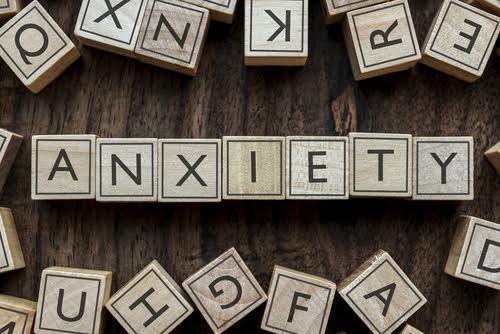Anxiety disorders are the most common mental health issue in the world. Among US adolescents alone, an estimated 31.9 percent struggle with an anxiety disorder (38 percent of girls and 26 percent of boys). This is a significant portion of teens, and it doesn’t change much in adulthood. Currently, about 31.1 percent of US adults report experiencing symptoms of an anxiety disorder at some point in their lives.
What makes anxiety so common, why is it such a big deal, and how to deal with teenage anxiety? We’re all anxious about something at some point in our lives – but being anxious or worried is not a sign of disorder. An anxiety disorder differentiates itself from regular worry by being prevalent, irrational, and consuming. Anxiety disorders are characterized by choking and immobilizing feelings of worry that engulf and ruin a person’s day, day by day, to the point of interfering with their personal, academic, and professional lives.
Teens are affected by anxiety more heavily than adults, partially because the onset for most anxiety disorders is during the teen years – but for many people, these issues can persist throughout life.
Coping with teenage anxiety doesn’t just make life easier for teens. Learning to cope with anxiety problems as early as possible can improve symptoms and quality of life in the long term. These coping skills and stress management tools are vital, but they aren’t easily learned. It takes time, support, and access to the right resources to build a personal repertoire for dealing with anxious thoughts and avoiding cyclical behavior.
What Are Anxiety Disorders?
Anxiety disorders are characterized by different symptoms. While there are dozens of specific diagnoses, most people who struggle with anxiety generally have one of the following forms:
- Generalized anxiety disorder – this is the most common form of anxiety disorder and describes a form of anxiety that is felt without any specific triggers or direction.
- Social anxiety disorder – a form of anxiety felt around social situations, feeling worried about being awkward constantly, worrying about embarrassment all the time, avoiding people and groups out of fear.
- Panic disorder – a condition characterized by frequent panic attacks following an overwhelming amount of stress. Panic attacks include feelings of tightness around the chest, shortness of breath, and hyperventilating.
- Phobias – phobias are irrational fear and constant intrusive thinking around one specific thing, such as concepts (crowds, enclosed spaces), specific animals, or situations (the dentist’s office, being injected with a needle).
- Selective mutism – this is a rare condition associated with anxiety disorders, wherein a person fails to speak, especially in social situations. People with selective mutism might not talk to strangers, even after an introduction. In general, selective mutism occurs the most in young children. But it can be an issue in older kids as well.
Some conditions are considered anxiety disorders, anxiety-adjacent, or were previously classified as anxiety disorders—these include stress-related conditions like post-traumatic stress disorder and separate diagnoses like obsessive-compulsive disorder.
While PTSD is a condition characterized by a constant fight-or-flight reaction to stimuli because of a traumatic experience, OCD is a severe anxiety disorder characterized by a cycle of unwanted, obsessive thoughts and temporarily soothing compulsions, which in turn fuel more thoughts.
In general, recognizing anxiety in a teen isn’t about trying to diagnose them with something right off the bat. It is enough to realize that your loved one might be doing worse at school or responding less to people around them because they’re struggling with anxious and unwanted thoughts. Important signs and symptoms to watch out for include:
- Physical reactions to normal situations, such as flinching often, shaking, or trembling.
- Frequent unexplained headaches and stomachaches.
- Elevated levels of stress, even when things are normal.
- Worrying constantly about things that aren’t relevant, thinking back on scary situations even in a calm context.
- Talking about feelings of impending doom.
- A physical feeling of weight on the chest and shoulders.
- A mood that often varies, including high irritability and random bouts of sadness.
Alleviating Teenage Anxiety
Anxiety disorders are mental health issues, which means that the best way to deal with them is to seek professional help. But that doesn’t mean you’re powerless as a teen’s parent, relative, or friend. There are ways you can address their anxieties in addition to recommending that they see a professional. These include:
- Driving them to an appointment with a therapist. Some teens don’t want to seek help out on their own, especially if their worries mean they feel they don’t deserve the help or that it wouldn’t improve their situation.
- Being there to listen to them. Sometimes it can help to provide a space for a teen to be with someone else without necessarily saying or doing anything. Sometimes, that space is also a good place to bring up some anxious thoughts and feelings. While therapy is central to helping individuals find ways to combat anxieties in their own heads, there are ways you can help a loved one by lending them an ear.
- Take charge of your mental and physical health together. Whether someone you know regularly feels anxious or has already been diagnosed with an anxiety disorder, there are different ways you can help them. Go do things you used to enjoy doing together. Pick up new hobbies. Play some music. Make a commitment to eat better together. Share tips to make healthy living easier. Encourage sleeping at an earlier time and talking to a professional about sleep issues.
- Creating a home environment conducive to healthy living. If you meet with a therapist, talk to them about what you can do to help your teen feel better at home, and continue their anxiety treatment over time. You don’t need to treat your loved one like a patient, but their therapist might have tips for how you can better recognize when something makes them uncomfortable and how to help them build their confidence through skills learning ample rest and recovery, and a focus on self-esteem.
Treatment Processes for Teenage Anxiety
Treating teenage anxiety often starts at home, but there are still elements of the treatment process that can require professional help. Anxiety medications might help reduce symptoms, particularly in teens with severe reactions to social or phobia-related situations.
A large part of the treatment process is one-on-one therapy. Talk therapy, usually in the form of cognitive behavioral therapy, centers around helping teens identify and change maladaptive and harmful thoughts and behaviors through thought exercises, logical thinking, dialectics, and working with a therapist.
If your loved one has been struggling with anxiety, getting them the help they need is crucial. If they’re already in treatment, then talking to their therapist (or to them!) can give you greater insight into what might help them feel better and how you can support them.






